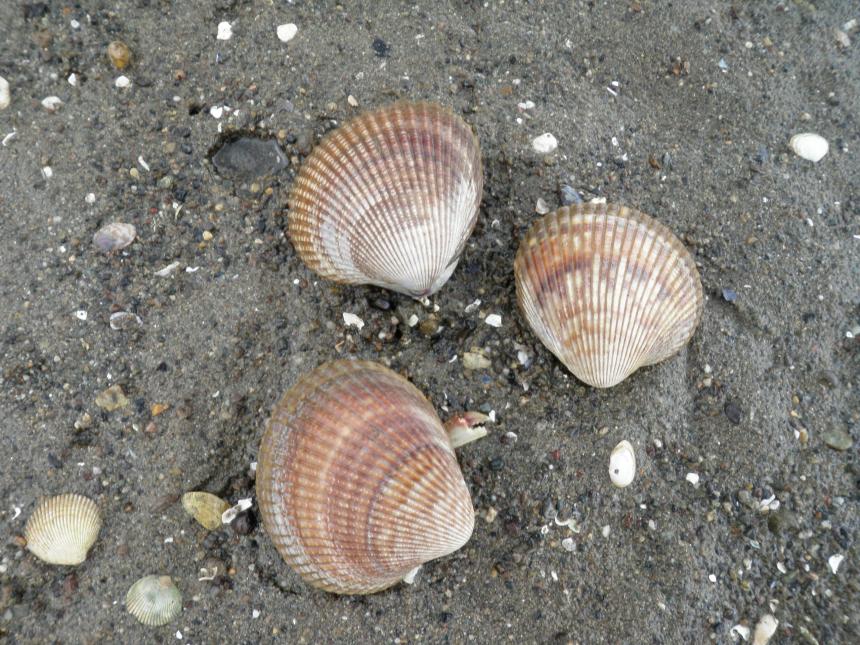Clams can be dug by hand or hand-operated fork, pick, rake, or shovel. Each digger must use a separate container to retain catch. Digging equipment may be shared. Clam holes must be refilled. To reduce clam mortality, please push any undersized clams into the refilled hole. Caution: Always check the local biotoxin status before harvesting via the biotoxin hotline (1-800-562-5632) or www.doh.wa.gov/shellfishsafety.
Description and Range
Physical description
Nuttall's cockles grow to 5½ inches. They have strong, rounded, radiating ribs that are longer on the posterior (with the hinge ligament) side. They are typically yellow to brown colored, with a mottled appearance. When the cockle is viewed from the side so that both valves (shells) are visible, it resembles the shape of a heart. Cockles have a strong digger foot which they sometimes use to "jump" away from predators like the sunflower star.
Nuttall's cockles are buried 1-2 inches deep in sandy, sheltered beaches and are also found in gravel and cobble substrate. Live cockles are also sometimes found lying on the beach surface.
Clinocardium nuttallii has multiple common names. Several state agencies refer to them as 'heart cockles'. Many other sources call them some version of 'Nuttall's cockle' and also 'basket cockle'. All of these names refer to the same species, which is common on Puget Sound beaches.
Geographic range
Nuttall's cockles are found from the Bering Sea, AK south to San Diego, CA.
Regulations
Licenses and permits
Anyone digging for clams in Washington must have a valid license that includes shellfish harvest. See the Sportfishing Rules Pamphlet for more information, or visit a license dealer.
Rules and seasons
Minimum size 1½ inches measured across longest distance of the shell. Daily combined limit of all clam species (excluding HORSE CLAMS and GEODUCKS) no more than 40 clams, not to exceed 10 pounds in the shell.
Recreational clam seasons are beach-specific and may change annually. Check this year’s seasons here: Public clam, mussel, and oyster beaches. Always check the DOH biotoxin status before harvesting.
